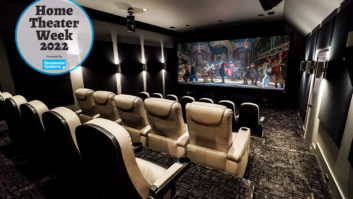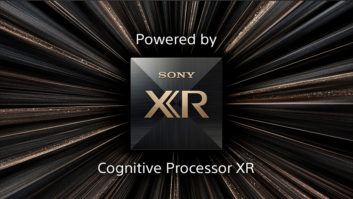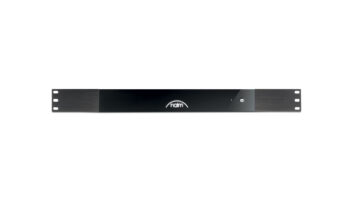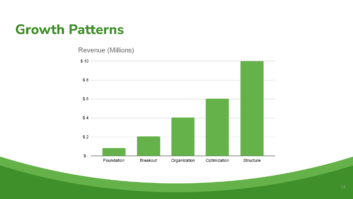I was reminiscing the other morning about how much things have changed in this industry since I started back in 1998. And even though many of the basic, core things such as running speaker wiring, installing and integrating gear, programming and troubleshooting systems remain, much of what we do has been dramatically altered by evolving technology.
When I started boiling it down in my head, there are really five major things that have had a massive sea change and lasting impact on our industry; technological changes that caused complete shifts in the way the industry worked then, and still work to this day.
Below is a list of what I feel are the five greatest technologies that have shaped the custom installation landscape.

Image: Thinkstock
5. Smart Flat Panel TVs
When I started installing, a “big” TV was a 55-inch rear pro model. And it took four guys to deliver. These sets would often wheel into massive cabinetry that would be built in a tower-and-bridge design around the TV in an attempt to make the huge TV cabinet appear like something it wasn’t. Bedroom TVs were generally 27-inch models, usually set into an armoire or on a dresser, or occasionally mounted on a big wall bracket that looked like something you’d see in a hospital room. Flat panels came along, and our world changed almost overnight.
These sets changed not only how we installed TVs, but where people would put them, how large they would go, and how many they would purchase. Main TVs jumped to 65- and 75-inch models, and bedroom sets are typically 46 to 55 inches. Where a house “full” of TVs in the past might have been three or four sets, now it isn’t uncommon to sell six or eight to a single customer.
With nearly every modern TV being a connected “Smart TV,” the TV itself is becoming the source for entertainment, with many people happy to use the set’s included apps and little else.
The steady improvements in flat panel technology—along with the precipitously rapid price decreases—fueled a decade’s worth of growth and installations for our industry, and still remains one of the biggest install drivers.
4. iPhone
Up until the iPhone came out, smartphones really weren’t all that smart. The iPhone was such a game changer that it was like you were getting a glimpse into the future the first time you held one in your hands. I remember the first time I saw one; it was the person sitting across the aisle from me on an airplane. I started asking him so many questions about it that my wife finally had to tell me to stop interrogating the poor man.
Building on the heels of the iPod’s amazing success, the iPhone ramped everything to the next level and introduced the entire world to the concept of touchscreen control. No longer did you need to carry around two devices for communication and entertainment, but had the entire world readily available at all times in your pocket!
The game-changing thing for our industry was when companies like Control4 and Crestron started tapping into the iPhone’s power as a home controller. No longer did people need to spend $1,000 for purpose-built touchscreen controllers that lived in one place in the home. With the iPhone everyone in the house had a controller with them wherever they went. Sure, it cost us a bunch of touchscreen sales, but it also opened up a whole new world of installation possibilities for people that wanted whole-house control on a sub-five-figure budget.
3. Digital Media
Originally I had the iPod on this list. And while the iPod was, without question, a game-changing device—having companies scrambling to find ways to incorporate a 30-pin connector and “works with iPod” logo to suck the music and metadata from the iPod’s brain—the iPod turned out to be a temporary evolution in our industry, and is all but gone in modern installs.
Because, when you drill in a bit deeper, what made the iPod so great and even possible was digital media.
When things moved from physical media to the digital domain, our world changed. Gone were the mega-CD and DVD changers, replaced by client devices that could stream content from a central server or hard drive. Once it was data freed from the constraints of a physical device, it could be shuttled around the home or even the world. With metadata embedded in the stream, you could know everything you wanted to about a particular track or artist.
Digital media gave rise to the music server, the movie server, the ability to carry 10,000 songs in your pocket (or cloud-access to every song/movie ever made) and ultimately, allowed such industry-changing services as Netflix and Sonos to exist.
2. Category Cable
Our company was exclusively using Cat-5 cabling back in 1998 when I started. At the time, it was mostly an easy way to give someone up to four phone lines at one location, or to connect a keypad to an audio system, or for a remote infrared receiver or emitter.
Not only is Cat-rated cabling still around, much like old Ben Kenobi, it has become more powerful than we could ever have possibly imagined!
Today Cat wire has become the prominent cable of every install. Whether it is for the home’s network, the backbone of solid Wi-Fi distribution, the link for long-range audio/video distribution, the ideal solution for a land-line (or four!), or just the life-saving “I’m gonna pull an extra one, just in case,” Cat cable is so exceptionally versatile, it is truly the Swiss Army Knife of products and every installer’s friend.
And not only is the cable amazing in what it can do, look at how incredibly cheap the stuff is! The wire is so inexpensive, I occasionally use leftover scraps to tie up yard debris! (True story!) Nor is it overly complex and complicated, being unbelievably easy to field terminate and test by even your most entry-level tech. Need to trim a cable to an exact length, have a damaged wire or termination, or suspect a bad pair? No problem.
1. The Internet/Network
The home’s network has grown from being a nice, convenient feature allowing multiple computers to send emails and share a printer into a vital link to the outside world. Many people now stream 100 percent of their entertainment content from the internet, eschewing traditional cable, satellite, and even off-air feeds. Where our number-one service call used to be “my cable box is acting up,” it’s now “my internet/network is down!”
Looking at the four items above, they are all in some way driven by, connected to, or reliant on the internet or home network to operate. And virtually every new device we install is connected in some way. As game-changing technologies go, it’s tough to make a bigger argument than the World Wide Web!
Think I missed something or have my order wrong? Let me know about it in the comments!







